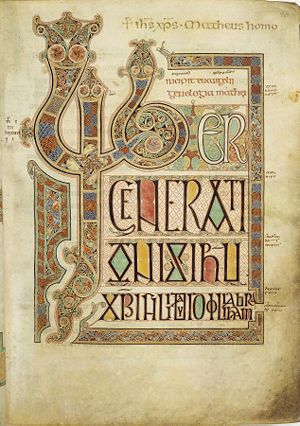Portal:Anglo-Saxon England
Anglo-Saxon England
Anglo-Saxon England or Early Medieval England covers the period from the end of Roman Britain in the 5th century until the Norman Conquest in 1066. It consisted of various Anglo-Saxon kingdoms until 927, when it was united as the Kingdom of England by King Æthelstan (r. 927–939). It became part of the short-lived North Sea Empire of Cnut, a personal union between England, Denmark and Norway, in the 11th century. The Anglo-Saxons migrated to Britain from mainland northwestern Europe after the Roman Empire's withdrawal from Britain at the beginning of the 5th century. Anglo-Saxon history thus begins during the period of sub-Roman Britain following the end of Roman control, and traces the establishment of Anglo-Saxon kingdoms in the 5th and 6th centuries (conventionally identified as seven main kingdoms: Northumbria, Mercia, East Anglia, Essex, Kent, Sussex, and Wessex); their Christianisation during the 7th century; the threat of Viking invasions and Danish settlers; the gradual unification of England under the Wessex hegemony during the 9th and 10th centuries; and ending with the Norman Conquest of England by William the Conqueror in 1066. The Normans persecuted the Anglo-Saxons and overthrew their ruling class to substitute their own leaders to oversee and rule England. However, Anglo-Saxon identity survived beyond the Norman Conquest, came to be known as Englishry under Norman rule, and through social and cultural integration with Romano-British Celts, Danes and Normans became the modern English people. (Full article...) Selected articleLindsey or Linnuis (Old English Lindesege) was a lesser Anglo-Saxon kingdom, absorbed into Northumbria in the 7th century. It lay between the Humber estuary and the Wash, forming its inland boundaries from the courses of the Witham and Trent rivers, and the Foss Dyke between them. A marshy region south of the Humber known as the Isle of Axholme was also included. Place-name evidence indicates that the Anglian settlement known as Lindisfaras spread from the Humber coast. Lindsey means the 'island of Lincoln': it was surrounded by water and very wet land, and Lincoln was in the south-west part of the kingdom. Although it has its own list of kings, at an early date it came under external influence. It was from time to time effectively part of Deira, of the Northumbrian kingdom, and particularly later, of Mercia. Lindsey lost its independence long before the arrival of the Danish settlers. The kingdom's heyday seems to have come before the historical period. By the time of the first historical records of Lindsey, it had become a subjugated polity, under the alternating control of Northumbria and Mercia. All trace of its individuality had vanished before the Viking assault in the late ninth century. Its territories evolved into the historical English county of Lincolnshire, the northern part of which is called Lindsey. (more...) Did you know?
SubcategoriesSelected image Folio 27r from the Lindisfarne Gospels contains the incipit from the Gospel of Matthew. The Lindisfarne Gospels (now kept in the British Library) is an illuminated manuscript gospel book produced around the year 700. Selected biography
Cnut the Great (Old Norse: Knútr inn ríki; c. 985 or 995 – 12 November 1035), also known as Canute, was a king of Denmark, England, Norway and parts of Sweden. After the death of his heirs within a decade of his own and the Norman conquest of England in 1066, his legacy was largely lost to history. Cnut was of Danish and Slavic descent. His father was Sweyn Forkbeard, King of Denmark and his mother was the daughter of the first duke of the Polans, Mieszko I. Cnut won the throne of England in 1016 in the wake of centuries of Viking activity in northwestern Europe. His accession to the Danish throne in 1018 brought the crowns of England and Denmark together. Cnut held this power-base together by uniting Danes and Englishmen under cultural bonds of wealth and custom, rather than sheer brutality. After a decade of conflict with opponents in Scandinavia, Cnut claimed the crown of Norway in Trondheim in 1028. He had coins struck which called him king there, but there is no narrative record of his occupation. Cnut's possession of England's dioceses and the continental Diocese of Denmark was a source of great leverage within the Church, gaining notable concessions from Pope Benedict VIII, and his successor John XIX, such as one on the price of the pallium of his bishops. Cnut also gained concessions on the tolls his people had to pay on the way to Rome from other magnates of medieval Christendom, at the coronation of the Holy Roman Emperor. (more...) Things you can do
Featured articles and lists
Related portalsWikiProjects
Associated WikimediaThe following Wikimedia Foundation sister projects provide more on this subject:
| |||||||||||||||||||














